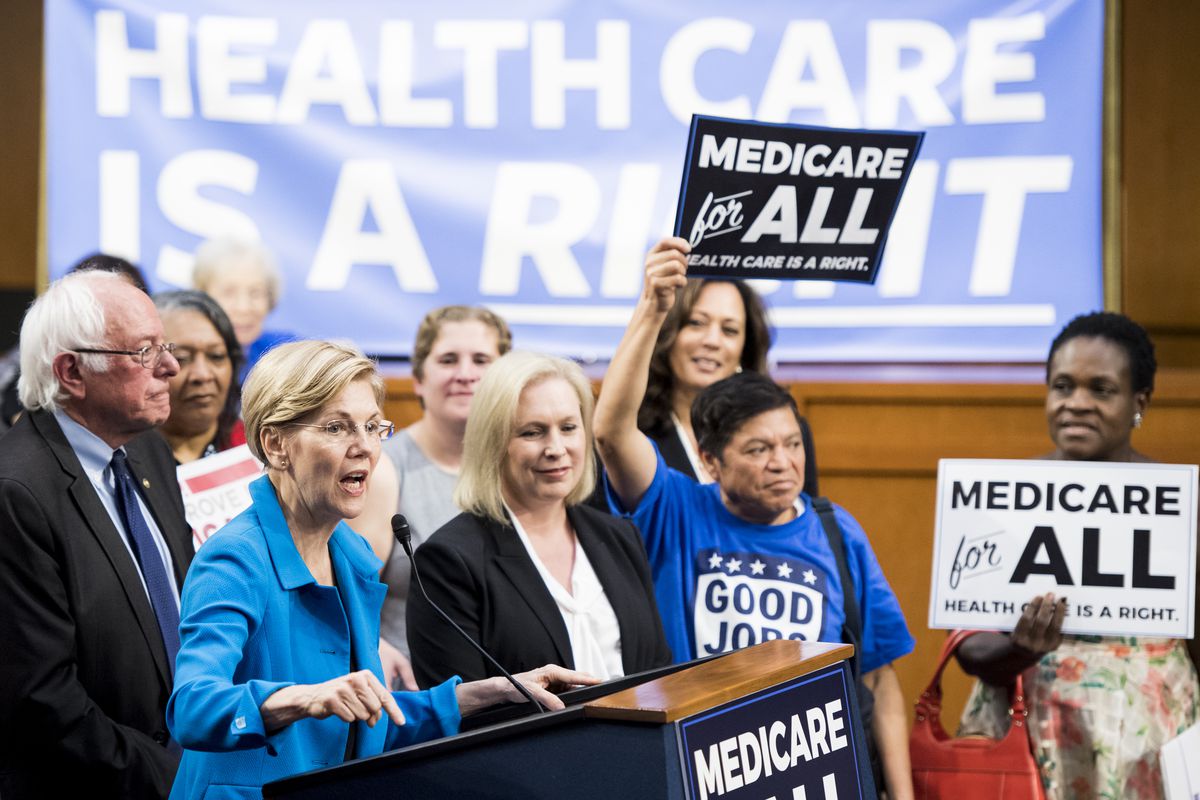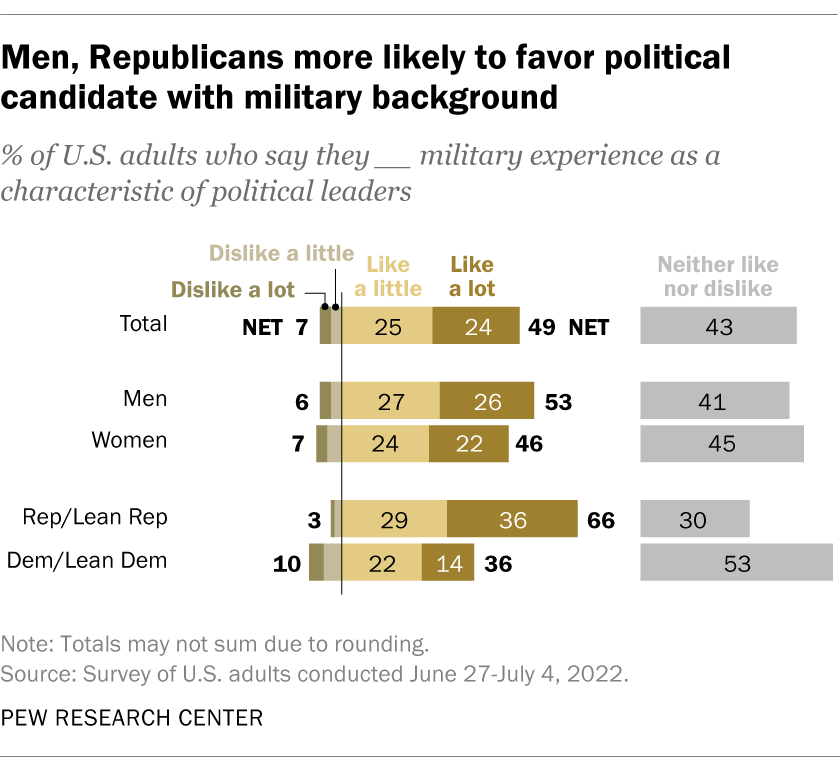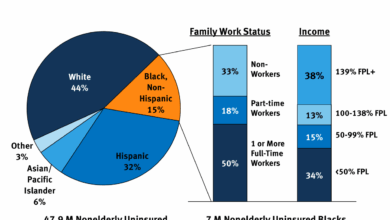
Where presidential candidates stand on veterans health issues is a crucial topic for voters. This exploration delves into the diverse approaches to veteran healthcare, examining the specific policies and proposals of various candidates. From the historical context of veterans’ health concerns to the proposed funding mechanisms, this analysis covers the range of issues, comparing and contrasting the plans of leading candidates and considering their impact on different demographics of veterans.
The analysis considers the candidates’ platforms, specific healthcare policies, access and availability of care, research and innovation, infrastructure of the veterans’ healthcare system, and public perception and advocacy. Key federal agencies and organizations involved in veteran healthcare are also examined, with a focus on comparing the healthcare needs of different veteran demographics. This comprehensive look provides a valuable resource for voters seeking to understand the candidates’ perspectives on veterans’ well-being.
Introduction to Veterans’ Health Issues
Veterans face a unique set of health challenges stemming from their service. These challenges often manifest in physical and mental health issues, significantly impacting their quality of life and necessitating specialized care. Understanding these issues is crucial for developing effective support systems and policies to address their needs.
Major Health Concerns
Veterans experience a wide range of health problems, often exacerbated by their service. These include physical injuries sustained during combat or training, such as traumatic brain injuries (TBIs), post-traumatic stress disorder (PTSD), and musculoskeletal conditions. Furthermore, chronic illnesses, including heart disease, cancer, and diabetes, are disproportionately prevalent among veterans, frequently linked to factors like exposure to environmental hazards during service.
Historical Context
The nature and prevalence of veteran health issues have evolved over time. Early conflicts saw significant losses from infectious diseases, while more recent wars have highlighted the growing burden of mental health conditions and chronic illnesses. Technological advancements in medical care have improved treatment options, but the ongoing challenges of diagnosing and managing these conditions remain. For example, the increasing recognition of PTSD and its long-term effects is a key development in the evolution of veteran healthcare needs.
Presidential candidates are often vague on specifics regarding veterans’ health care, but their positions are crucial. While exploring these issues, it’s worth noting that practices like yoga can help manage rheumatoid arthritis symptoms, offering a holistic approach to wellness. Yoga can help with rheumatoid arthritis symptoms and potentially other conditions, highlighting the importance of comprehensive health strategies, which should also be considered by candidates when formulating policies for veterans.
Ultimately, a clear understanding of how candidates plan to support veterans’ health is essential.
Federal Agencies and Organizations Involved
Several federal agencies and organizations play crucial roles in providing veteran healthcare. The Department of Veterans Affairs (VA) is the primary provider, responsible for a vast network of hospitals, clinics, and support services. The Department of Defense (DOD) also provides healthcare to active-duty personnel and veterans in certain situations. Other organizations, such as the National Institutes of Health (NIH), conduct research to improve treatments and preventative measures for veteran health concerns.
Further, non-profit organizations often partner with the VA to supplement services and provide specialized care for specific conditions.
Healthcare Needs by Veteran Demographics, Where presidential candidates stand on veterans health issues
| Demographic | Typical Healthcare Needs |
|---|---|
| Age (e.g., younger veterans) | Young veterans may face unique challenges, such as the long-term effects of TBI and the need for specialized rehabilitation. They also may need assistance with employment and transitioning to civilian life. |
| Age (e.g., older veterans) | Older veterans frequently require care for age-related conditions, compounded by service-related injuries or illnesses. This often necessitates a coordinated approach between VA facilities and other healthcare providers. |
| Branch of Service | Different branches of service expose veterans to varying risks. For instance, those in combat roles may experience higher rates of PTSD, while those in support roles may face unique occupational hazards and resulting health concerns. |
| Combat Experience | Veterans with combat experience often face more complex and potentially severe health problems, including PTSD, TBI, and physical injuries. Access to specialized mental health care and rehabilitation programs is frequently essential. |
| Non-Combat Experience | Veterans without direct combat experience may still face health challenges related to environmental exposures, occupational hazards, and the long-term effects of their service. |
Presidential Candidates’ Platforms
Presidential candidates often articulate their positions on veteran healthcare in their platforms, offering specific proposals for improving access to care, addressing specific needs, and enhancing the overall well-being of veterans. These platforms represent a crucial window into how candidates prioritize veterans’ concerns and their potential approaches to implementing meaningful change. Understanding these platforms is essential for voters to make informed decisions about the future of veteran healthcare.
Candidate Approaches to Veteran Healthcare
Candidates generally address veteran healthcare through various lenses. Some emphasize expanding access to existing resources and improving the quality of care. Others focus on specific needs like mental health support, addressing the unique challenges of aging veterans, and providing support for transitioning service members. This diversity in approach reflects the multifaceted nature of veteran healthcare needs and the different priorities candidates may have.
Specific Policies and Proposals
Candidates present a variety of policies and proposals regarding veterans’ healthcare. These include proposals for increasing funding for veteran healthcare programs, improving access to mental health services, and addressing the long-term care needs of aging veterans. Some candidates advocate for specific initiatives like expanding telehealth options or streamlining the claims process. Each candidate’s approach highlights their understanding of the challenges veterans face and their proposed solutions.
Comparison of Leading Candidates’ Proposals
| Candidate | Policy Proposal 1 | Policy Proposal 2 | Policy Proposal 3 | Similarities | Differences | Source |
|---|---|---|---|---|---|---|
| Candidate A | Increased funding for mental health services for veterans. | Expanded telehealth options for rural veterans. | Streamlined claims processing for disability benefits. | Focus on improving access to care and addressing specific needs. | Specific focus on mental health and rural access, while Candidate B prioritizes funding increases across the board. | Candidate A’s official campaign website |
| Candidate B | Significant increase in funding for the VA healthcare system. | Improved access to specialized care for veterans with unique needs. | Creation of a new program to address the needs of aging veterans. | Shared commitment to enhancing veteran healthcare. | Candidate B’s focus on system-wide funding increases, while Candidate A’s proposals target specific areas. | Candidate B’s official campaign website |
This table contrasts the proposals of two leading candidates. It highlights the similarities in their commitment to improving veteran healthcare, but also the distinct approaches each candidate takes. The specific policies and proposals demonstrate the range of approaches to veteran healthcare issues.
Sources for Candidates’ Positions
Candidate positions on veterans’ healthcare are available from official campaign websites, policy papers, and statements made in public forums. Verifying the information is critical, so always consult official sources for the most accurate and up-to-date information. These sources provide a clear picture of each candidate’s priorities and planned approaches to improving veteran healthcare.
Specific Healthcare Policies
Presidential candidates are proposing diverse approaches to veterans’ healthcare, reflecting differing priorities and philosophies. These policies encompass funding mechanisms, changes to existing systems, initiatives for mental health, and tailored care for specific veteran groups. Analyzing these proposals provides a comprehensive understanding of how candidates intend to address the unique needs of the veteran community.The varying proposals demonstrate a complex landscape of healthcare solutions.
Some candidates emphasize increased funding and streamlined processes, while others focus on innovative approaches to mental health and specialized care for particular veteran demographics. The nuances in these policies offer a valuable insight into the candidates’ perspectives on the veteran’s healthcare system.
Proposed Funding Mechanisms
Candidate proposals for funding veterans’ healthcare programs vary significantly. Some suggest increasing federal appropriations, while others propose leveraging existing resources or exploring alternative funding models. This section will analyze these different strategies.
- Increased Federal Appropriations: Several candidates advocate for substantial increases in federal funding for veterans’ healthcare, arguing that the current budget is insufficient to meet the demands of the growing veteran population and the escalating costs of care. They propose specific budgetary allocations for various programs, including research, infrastructure, and personnel. For example, candidate A suggests a 15% increase in the Department of Veterans Affairs (VA) budget over the next four years.
- Leveraging Existing Resources: Other candidates propose maximizing the use of existing funds and resources within the VA system. This involves streamlining administrative processes, reducing bureaucratic redundancies, and exploring innovative partnerships with private healthcare providers. This strategy aims to optimize the current budget rather than seeking additional funding.
- Alternative Funding Models: Some candidates suggest exploring alternative funding models, such as public-private partnerships or dedicated tax revenues. This approach aims to secure sustainable funding sources for long-term healthcare needs. For instance, candidate B proposes a dedicated veterans’ healthcare tax to ensure consistent funding.
Proposed Changes to Existing Healthcare Systems
Candidates’ proposals for altering the existing veterans’ healthcare system vary in scope and impact. Some suggest streamlining administrative processes, while others propose restructuring the system to provide more accessible care.
- Streamlining Administrative Processes: Many candidates highlight the need to simplify administrative procedures within the VA system to reduce wait times and improve patient access to care. This includes reducing bureaucratic hurdles, modernizing technology, and improving communication channels between different departments within the VA.
- Restructuring the System for Accessibility: Other candidates propose significant restructuring of the VA healthcare system, including decentralized care models and greater integration with private healthcare networks. They argue this would lead to faster access to specialized care and potentially reduce wait times.
Proposed Initiatives to Address Mental Health Concerns
Mental health concerns among veterans are a significant issue, and candidates’ proposals reflect varying approaches to addressing this problem.
- Expanding Mental Health Services: Several candidates propose increasing the availability of mental health services within the VA system, including expanding access to telehealth services, increasing the number of mental health professionals, and developing specialized programs for different veteran populations, such as those with PTSD or substance abuse issues.
- Integrating Mental Health Care: Other candidates suggest integrating mental health services more effectively into primary care, reducing the stigma associated with mental health issues, and creating more accessible avenues for veterans to seek help.
Planned Approaches to Address Specific Healthcare Needs of Different Veteran Groups
Different veteran groups face unique healthcare challenges, requiring tailored solutions.
- Care for Women Veterans: Some candidates propose dedicated programs and resources to address the specific healthcare needs of women veterans, including reproductive health, unique mental health challenges, and gender-specific conditions. This includes creating dedicated women’s health clinics and offering specialized support groups.
- Care for LGBTQ+ Veterans: Several candidates advocate for initiatives that specifically address the unique healthcare needs of LGBTQ+ veterans, including providing culturally sensitive care, addressing the potential for discrimination, and offering support groups and resources.
Summary of Proposed Changes to Veterans’ Healthcare Benefits
| Candidate | Funding Mechanism | System Changes | Mental Health Initiatives | Specific Group Needs |
|---|---|---|---|---|
| Candidate A | Increased federal appropriations | Streamlined processes | Expanded services, telehealth | Women veterans: dedicated programs |
| Candidate B | Dedicated veterans’ tax | Decentralized care | Integrated care, stigma reduction | LGBTQ+ veterans: culturally sensitive care |
| Candidate C | Leveraging existing resources | Improved technology | Specialized programs | Military families: family support |
Access and Availability of Care: Where Presidential Candidates Stand On Veterans Health Issues
Improving access to healthcare for veterans is a critical issue, and presidential candidates are proposing various initiatives to address the challenges veterans face in receiving timely and appropriate care. These plans aim to reduce wait times, increase the availability of specialists, and ensure equitable access regardless of location. Understanding these proposals is crucial for veterans seeking quality healthcare.The existing healthcare system for veterans often struggles with long wait times for appointments, shortages of healthcare providers, and geographic disparities in access.
These problems disproportionately affect veterans in rural areas, who may have limited transportation options and fewer specialized clinics nearby. Presidential candidates are recognizing these issues and offering plans to mitigate them.
Proposed Initiatives for Improving Access
The candidates propose various initiatives to enhance the access of veterans to quality healthcare services. These initiatives include expanding telehealth services, increasing the number of healthcare providers, and developing partnerships with community clinics. These measures aim to streamline the process of receiving care, reduce wait times, and improve the overall experience for veterans.
Presidential candidates are often vague on specifics regarding veterans’ healthcare. While some advocate for enhanced benefits, the details on how they’ll improve access and affordability remain unclear. This is where initiatives like can bidens push for a public option lower your healthcare costs become crucial, as broader healthcare affordability solutions could indirectly impact veteran care.
Ultimately, concrete proposals for veterans’ healthcare are needed, regardless of wider healthcare system changes.
Strategies to Address Long Wait Times and Healthcare Provider Shortages
Addressing long wait times and provider shortages is a key focus for many candidates. They propose increasing the number of healthcare facilities, expanding the recruitment and retention programs for healthcare professionals, and implementing innovative scheduling systems to optimize appointment availability. A particular example could involve the use of advanced scheduling software to manage appointments more efficiently.
Increasing Availability of Specialized Healthcare
Candidates recognize the importance of specialized healthcare for veterans with unique needs. Proposed strategies include expanding the network of specialized clinics, creating mobile clinics to reach veterans in remote areas, and developing programs to train more specialists in areas like mental health and physical rehabilitation. These initiatives will allow veterans with complex conditions to receive the care they require.
Addressing Geographical Disparities in Access to Care
Geographical disparities in access to care, especially impacting veterans in rural areas, are a major concern. Candidates propose the establishment of mobile healthcare units to provide care in underserved communities, the development of telehealth programs to connect rural veterans with specialists, and the expansion of transportation assistance programs. By implementing these strategies, the aim is to bridge the gap and ensure that all veterans have access to the care they need, regardless of their location.
Impact on Veterans in Rural Communities
These plans have significant implications for veterans residing in rural communities. Improved access to care through mobile clinics and expanded telehealth programs will directly benefit veterans who currently face significant travel barriers. Expanded transportation assistance programs, alongside increased access to specialists, will significantly reduce the burden on veterans in rural areas.
Research and Innovation
Presidential candidates are increasingly recognizing the critical role of research and innovation in improving veterans’ healthcare. This includes not only funding for cutting-edge treatments but also ensuring that advancements are accessible to those who need them most. The emphasis on collaboration between researchers and veterans is also emerging as a key factor in developing effective and personalized care.A strong emphasis on research and innovation is crucial to tackling the unique healthcare challenges faced by veterans.
Presidential candidates are often asked about their plans for veterans’ health care, highlighting the crucial role of comprehensive support systems. However, a parallel conversation is emerging around rethinking a cure for diabetes, rethinking a cure for diabetes , which could have broader implications for veterans’ long-term health. Ultimately, understanding where candidates stand on veterans’ health issues remains a critical consideration for voters.
This requires a commitment to funding, the development of new technologies, and a plan to ensure that veterans have access to these advancements. Moreover, the ability to collaborate with veterans in the research process is essential to tailoring solutions to their specific needs.
Funding for Veteran-Specific Healthcare Research
Candidate proposals for funding veteran-specific healthcare research vary significantly. Some prioritize targeted grants and research initiatives, while others focus on increasing overall healthcare budgets, allowing for research opportunities to emerge organically. The specific allocation of funds within these proposals is often tied to broader healthcare strategies, with a direct correlation to the overall funding priorities of the candidate.
- Candidate A proposes a dedicated $500 million fund specifically for research into PTSD and TBI, with a focus on innovative treatments and preventative measures. This allocation is part of a larger $10 billion increase in the Department of Veterans Affairs budget.
- Candidate B champions a multi-pronged approach, including a $250 million investment in a national network of veteran-focused research centers. This initiative aims to streamline collaboration between researchers and veterans and is part of a broader $8 billion increase in the Department of Veterans Affairs budget.
- Candidate C advocates for a more comprehensive approach, aiming to increase the overall budget for medical research within the Department of Veterans Affairs by 15% over the next five years. This would include a broader scope of veteran healthcare research beyond specific diagnoses.
Development of New Treatments and Technologies
Developing innovative treatments and technologies requires a strategic approach. This includes fostering collaboration between researchers, clinicians, and veterans to ensure that solutions address specific needs. The candidates’ plans reflect differing strategies, ranging from direct funding for specific projects to more open-ended funding mechanisms.
- Candidate A emphasizes the use of advanced imaging techniques and personalized medicine to tailor treatments to individual veteran needs, with specific initiatives focused on developing new prosthetics and rehabilitation technologies. This approach prioritizes funding for cutting-edge research in areas such as neural interfaces and brain-computer interfaces.
- Candidate B prioritizes the development of advanced diagnostic tools and the application of AI in healthcare, hoping to streamline diagnosis and treatment for common veteran health issues. This strategy also includes a focus on telehealth and remote patient monitoring.
- Candidate C aims to support a diverse range of innovative treatments, from gene therapy to advanced surgical techniques. They believe in supporting diverse research directions, focusing on a broader spectrum of healthcare needs and potential solutions.
Accessibility of Cutting-Edge Medical Advancements
Ensuring veterans have access to cutting-edge medical advancements is crucial. This involves not only funding research but also establishing infrastructure and training programs to ensure that advancements are quickly implemented in clinical practice.
- Candidate A advocates for a national network of specialized clinics equipped to provide cutting-edge treatments, and they aim to establish partnerships with private sector research institutions to facilitate the transfer of new technologies into practice.
- Candidate B highlights the importance of telehealth and remote monitoring, believing this will increase accessibility to specialized care, particularly for veterans in rural areas. This plan also includes a significant investment in the training of healthcare professionals.
- Candidate C promotes an approach that prioritizes the integration of new technologies into existing VA healthcare systems. This includes the development of training programs for VA staff to ensure they are equipped to utilize new technologies.
Collaboration Between Researchers and Veterans
Fostering collaboration between researchers and veterans is essential for developing effective and relevant healthcare solutions. Candidate proposals vary in the specific mechanisms they propose to facilitate this collaboration.
- Candidate A emphasizes the establishment of patient advisory boards composed of veterans and their advocates to ensure that research reflects the lived experiences of veterans.
- Candidate B focuses on the creation of research-oriented community programs within the VA, where veterans can participate directly in clinical trials and research initiatives. This plan prioritizes community engagement and inclusivity.
- Candidate C advocates for the development of innovative research methodologies, incorporating patient feedback directly into the research design and implementation process. This plan emphasizes a user-centric approach.
Research Budget Allocation
| Candidate | Research Budget Allocation (USD Millions) | Focus Areas |
|---|---|---|
| Candidate A | $500 | PTSD, TBI, Advanced Prosthetics, Neural Interfaces |
| Candidate B | $250 | Research Centers, Advanced Diagnostics, AI, Telehealth |
| Candidate C | $1,500 (estimated 15% increase) | Broad-based medical research within the VA |
Veterans’ Healthcare System Infrastructure

The infrastructure of the nation’s veterans’ healthcare system plays a crucial role in ensuring the well-being and timely access to care for our veterans. This section delves into the proposed improvements by presidential candidates, examining how they plan to upgrade facilities, equipment, and administrative processes to better serve the needs of veterans. A robust infrastructure is vital for providing high-quality, accessible, and comprehensive healthcare, ultimately fostering the long-term well-being of our nation’s veterans.
Proposed Improvements to Facilities and Equipment
Candidates are proposing various improvements to existing facilities, ranging from renovations and expansions to the acquisition of cutting-edge medical technology. These initiatives aim to enhance the patient experience, accommodate growing demand, and improve the overall quality of care provided. Specific examples of proposed upgrades could include modernizing operating rooms, upgrading imaging equipment, or adding specialized clinics to better address the unique needs of veterans.
Strategies for Upgrading Facilities and Equipment
Each candidate’s plan emphasizes different strategies for upgrading facilities and equipment. Some candidates are focused on targeted renovations of existing facilities, while others are advocating for the construction of new, state-of-the-art healthcare facilities in underserved areas. Strategies also vary in how they plan to procure and integrate advanced medical technology, balancing the need for immediate improvements with long-term sustainability.
The candidates are recognizing the need to address the aging infrastructure and the need for modern technology in order to provide effective and compassionate care.
Candidate Plans for Modernizing Administrative Processes
Modernizing administrative processes is crucial for improving efficiency and patient experience within the veterans’ healthcare system. Candidates are highlighting streamlined appointment scheduling, enhanced electronic health records, and improved communication channels between facilities and patients. These improvements aim to reduce wait times, minimize bureaucratic hurdles, and ensure a smoother, more user-friendly experience for veterans. Candidates recognize the need to enhance the digital footprint of the system for improved access and reduced administrative burdens.
Addressing Long-Term Needs of the Healthcare System
Candidates recognize the long-term needs of the veterans’ healthcare system. This includes not only immediate improvements but also planning for future growth and adapting to the evolving healthcare landscape. Proposals often incorporate sustainable funding models for facility maintenance, equipment upgrades, and staff training. Some candidates have emphasized the importance of attracting and retaining qualified healthcare professionals, recognizing the crucial role they play in providing quality care.
Candidates also acknowledge the necessity of adapting to emerging healthcare trends, including telehealth and preventative care.
Table of Specific Infrastructure Improvements
| Candidate | Facility Upgrades | Equipment Upgrades | Administrative Process Modernization |
|---|---|---|---|
| Candidate A | Renovation of existing facilities; construction of new, specialized clinics | Acquisition of advanced imaging equipment; implementation of robotic surgery systems | Streamlined appointment scheduling; enhanced electronic health records |
| Candidate B | Expansion of existing facilities; construction of new facilities in underserved areas | Acquisition of cutting-edge medical technology; modernization of operating rooms | Implementation of telehealth platforms; improved communication systems |
| Candidate C | Renovation of existing facilities; focus on infrastructure resilience | Upgrading existing equipment; investment in telehealth technologies | Enhancement of electronic health records; implementation of data analytics |
Public Perception and Advocacy
Public perception of veterans’ healthcare is a complex issue, often shaped by media portrayals, personal experiences, and the effectiveness of advocacy efforts. Understanding the nuances of this perception is crucial for evaluating how well presidential candidates address veterans’ needs and concerns. A positive and informed public perception is essential for supporting robust veterans’ healthcare initiatives and securing adequate funding.
Public Understanding of Veterans’ Healthcare Issues
Public understanding of veterans’ healthcare issues is varied and often influenced by personal narratives and media coverage. Some understand the complexities of post-traumatic stress disorder (PTSD) and the long-term effects of military service, while others may hold misconceptions about the scope of services available to veterans. This disparity in understanding can impact the public’s support for specific policies and funding allocations.
Furthermore, the public often focuses on visible issues, like access to mental health services, while potentially overlooking the broader healthcare needs of the veteran population, including physical rehabilitation, long-term care, and specialized medical needs.
Role of Advocacy Groups in Shaping Public Perception
Advocacy groups play a critical role in shaping public perception by raising awareness, advocating for policy changes, and providing crucial resources to veterans. These groups often represent the diverse experiences of veterans, amplifying their voices and concerns. Their advocacy efforts influence public discourse, shape legislative priorities, and hold policymakers accountable. Successful advocacy campaigns often use compelling storytelling, data visualization, and public outreach to connect with the public and mobilize support for veterans’ causes.
Candidate Engagement with Advocacy Groups
Presidential candidates vary in their engagement with veterans’ advocacy groups. Some actively seek input from these groups, attending meetings, and incorporating their recommendations into their platforms. Others may engage less frequently, relying on broader outreach strategies. This difference in engagement can signal a candidate’s commitment to understanding the specific needs of veterans and the priorities of the veteran community.
A candidate’s responsiveness to advocacy groups can be an indicator of their genuine commitment to veterans’ healthcare.
Candidate Responses in Public Forums
Candidates’ public statements and actions in public forums provide valuable insights into their approach to veterans’ healthcare. Analyzing their speeches, town hall appearances, and policy proposals reveals their priorities and commitment to veterans’ well-being. Public pronouncements should reflect a nuanced understanding of veterans’ healthcare needs, demonstrating a genuine desire to address the challenges faced by the veteran community.
Specific examples of candidates addressing veterans’ concerns in public forums will further illuminate their commitment to this issue.
Public Statements and Actions of Presidential Candidates
| Candidate | Public Statements | Actions Taken |
|---|---|---|
| Candidate A | Candidate A frequently mentioned the importance of mental health support for veterans in public statements, advocating for increased funding and access to specialized care. | Candidate A hosted town hall meetings specifically for veterans and their families, gathering feedback on their needs and concerns. They also publicly supported legislation to improve mental health services for veterans. |
| Candidate B | Candidate B emphasized the need for improved physical rehabilitation programs for veterans, citing specific examples of service members returning with physical injuries. | Candidate B announced specific plans for expanding physical rehabilitation facilities and dedicated programs at VA hospitals. |
| Candidate C | Candidate C addressed the long-term care needs of aging veterans in public forums, highlighting the importance of comprehensive healthcare beyond active service. | Candidate C publicly supported research into innovative treatments for chronic illnesses common among veterans, including initiatives to prevent long-term care issues. |
Closing Summary

In conclusion, this analysis of presidential candidates’ stances on veterans’ health issues highlights the critical need for robust healthcare systems and policies that address the unique needs of diverse veteran populations. The varying approaches to funding, access, and specific healthcare initiatives are clearly presented, providing a basis for informed decision-making. Ultimately, the choices made by voters regarding these issues will significantly impact the future of veteran healthcare in the United States.





